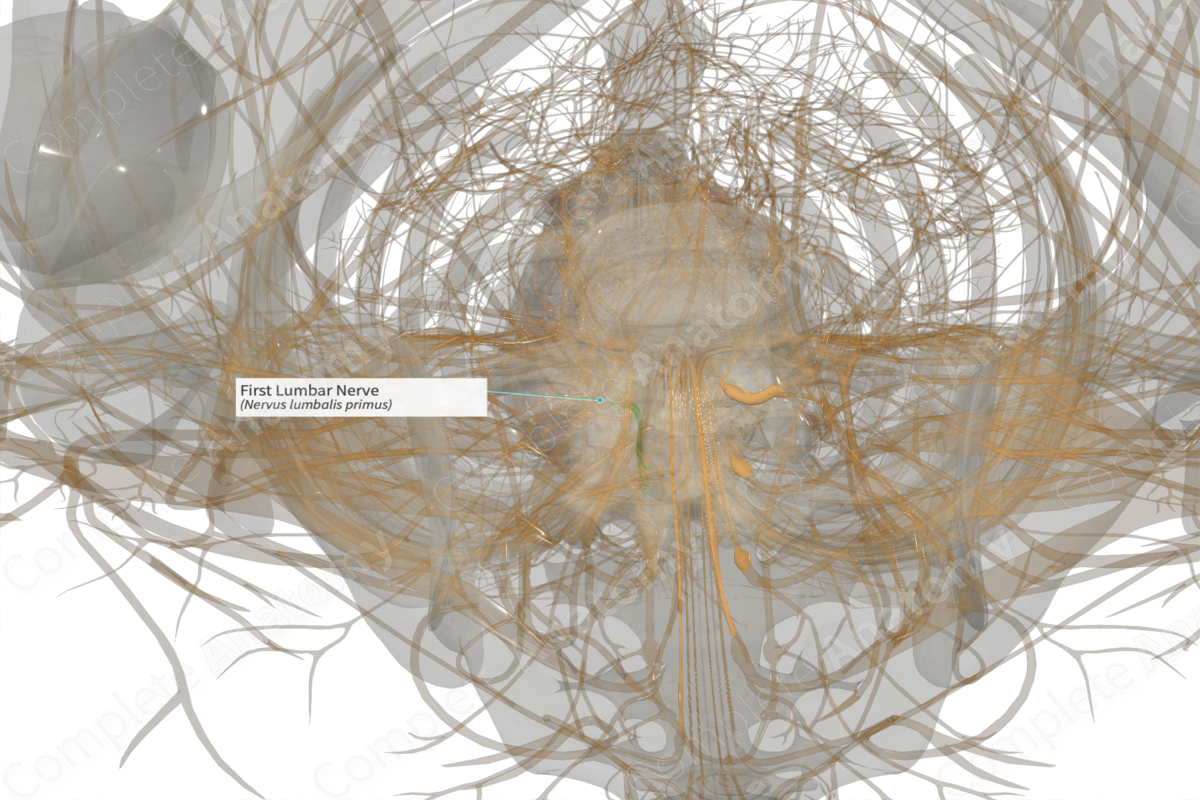
Quick Facts
Origin: The intervertebral foramen inferior to the first lumbar vertebra.
Course: Laterally to the lumbar plexus.
Branches: Posterior ramus, iliohypogastric, ilioinguinal, and genitofemoral nerves.
Supply: Motor innervation to epaxial back muscles, quadratus lumborum, transversus abdominis, internal abdominal oblique, and iliopsoas. Sensory innervation to skin of the lower back, inguinal region, and pubic region. Sympathetic innervation to the hindgut, kidneys, and genitals.
Origin
The first lumbar nerve originates in, or just lateral, to the intervertebral foramen, inferior to the first lumbar vertebra. Here, the anterior and posterior roots combine to form the first lumbar nerve proper.
Course
The first lumbar nerve gives off a posterior ramus that runs to the epaxial musculature and skin of the lower back, and an anterior ramus that runs inferior and laterally to the lumbar plexus.
Branches
The first lumbar nerve gives off a posterior ramus and three branches from the anterior ramus that contribute to the formation of the lumbar plexus. These include the iliohypogastric, ilioinguinal, and genitofemoral nerve. The iliohypogastric and ilioinguinal nerves can receive fibers from the subcostal nerve, while the genitofemoral nerve combines with fibers from the second lumbar nerve.
Supplied Structures
The posterior ramus of the first lumbar nerve supplies motor innervation to the epaxial muscles of the lumbar region, including erector spinae and transversospinal muscles. In addition, cutaneous innervation is received from the skin over the lower back.
The anterior ramus of the first lumbar nerve contributes to the lumbar plexus. The iliohypogastric nerve supplies motor innervation to quadratus lumborum, transversus abdominis, and internal abdominal oblique. Sensory innervation of the iliohypogastric nerve is received from skin of the lateral hip and inguinal regions.
The ilioinguinal nerve supplies motor innervation to the quadratus lumborum, transversus abdominis, and internal abdominal oblique muscles. Sensory innervation from the ilioinguinal nerve is received from skin of the inguinal region, mons pubis, and labium majus.
The genitofemoral nerve, which arises from both the first and second lumbar nerves, is almost entirely sensory in females. It may innervate a few vestigial muscle fibers on the round ligament of the uterus, that is embryologically related to the cremaster muscle in males. Sensory innervation of the genitofemoral nerve is to the mons pubis, labium majus (genital branch), and skin of the upper anterior thigh, or femoral triangle (femoral branch). In addition, small branches innervate the iliopsoas muscle.
Sympathetic fibers, which exit the first lumbar nerve via a white ramus communicans, travel to the sympathetic chain and ultimately target tissues in the hindgut, kidneys, or genital regions.
Learn more about this topic from other Elsevier products


